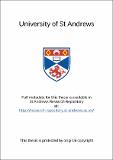Electrochemical reduction of carbon dioxide catalysed by nickel macrocyclic complexes
Abstract
The efficiency of the reduction of carbon dioxide catalysed by 1,4,8,11- tetraazacyclotetradecane nickel(II) (nickel cyclam) at a mercury electrode depends on the pH, temperature and the type of electrolyte. The use of non-aqueous solvents increases the catalytic current as a result of the greater solubility of carbon dioxide. Addition of alkali and alkaline earth metal cations also enhances the efficiency of the catalyst. Nickel cyclam exists in the form of five configurational isomers in aqueous solvents. Among these isomers the trans-III form displays the highest activity towards carbon dioxide reduction. This discrepancy in the catalytic activity was shown to be due to the extent of adsorption of each isomer. At a glassy carbon electrode in acetonitrile/water the catalysis occurs in solution whereas it is a surface confined process at the mercury electrode. The reduction products were analysed using gas chromatography, electron spray mass spectrometry and rotating ring disc electrode techniques. Carbon monoxide is the sole reduction product at the mercury electrode while both carbon monoxide (at -1.7 V) and oxalic acid (at —1.5 V) are produced at the glassy carbon electrode depending on the applied potential. The catalytic current measured using pentaaza and hexaaza macrocyclic complexes as catalysts was enhanced with simple alkyl, hydroxyethyl and aminoalkyl pendant arms. This enhancement of the catalytic current is probably due to formation of hydrogen bonds between the coordinated carbon dioxide and either the pendant arm or the non-coordinated tertiary nitrogen atom. Pentaaza macrocyclic complexes display a greater catalytic current than the hexaazamacrocyclic complexes, but the latter reduce carbon dioxide at less negative potentials. Pendant arms with large aromatic or sulphur-containing groups produced lower currents due to competitive adsorption. Cyclic voltammetry of two series of binuclear macrocyclic nickel(II) complexes with varying lengths of the chain linking the two macrocyclic showed that the two nickel sites in the binuclear complexes behave independently with the currents corresponding to the simultaneous transfer of two electrons. The redox potentials are remarkably constant along this series but the peak separations increase, reflecting slower electron transfer. The catalytic currents are about half those of the mononuclear complex; this is proposed to be due to steric constraints allowing strong interaction of only one nickel centre of the binuclear complex on the surface. The catalytic currents increased slightly as the linking chain length increased, reflecting some relaxation of the stereochemical constraints accompanying the adsorption of both nickel centres. Comparative investigations of cobalt and nickel macrocyclic complexes as photocatalysts with the ruthenium tris(bipyridyl) sensitiser indicate that the nickel complexes do not give detectable amounts of carbon monoxide and also inhibit hydrogen evolution from the reaction mixture.
Type
Thesis, PhD Doctor of Philosopy
Collections
Items in the St Andrews Research Repository are protected by copyright, with all rights reserved, unless otherwise indicated.

